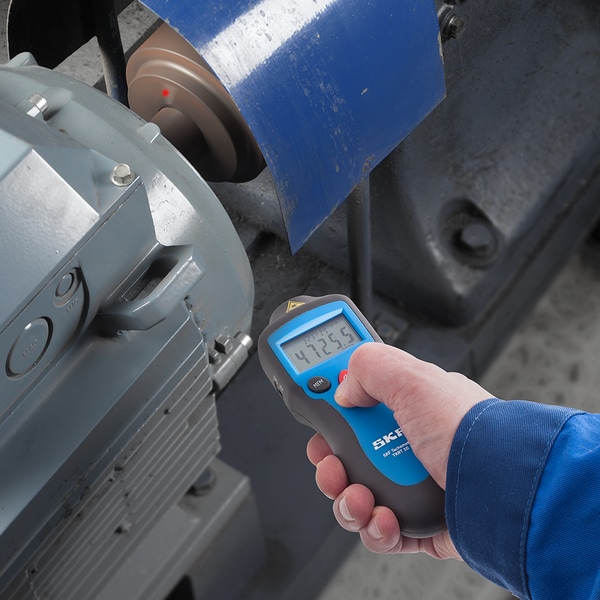Improve Your Driving Experience with a Trustworthy Tachometer
Improve Your Driving Experience with a Trustworthy Tachometer
Blog Article
The Value of a Tachometer in Keeping Track Of Engine Rate and Performance in Automotive Applications
In the world of automotive design, the tachometer stands as an essential tool in the chauffeur's collection, providing a direct window right into the inner operations of a lorry's engine. Past its feature as a simple scale of changes per minute (RPM), the tachometer offers as a critical tool for fanatics and professionals alike, providing real-time insights into engine efficiency and health and wellness. Recognizing the importance of this gadget exceeds surface-level monitorings, diving right into the elaborate connection in between engine rate, power result, and total driving experience. As we check out the complex role of the tachometer in automotive applications, a deeper gratitude for its influence on car dynamics and performance begins to emerge.
Importance of Keeping An Eye On Engine RPM
Monitoring engine RPM, or revolutions per minute, is an essential element of automobile upkeep and performance examination. Engine RPM straight associates with the speed at which the engine's crankshaft turns, showing how swiftly the engine is running - tachometer. By keeping an eye on RPM, auto mechanics can examine the health of the engine, discover potential concerns, and fine-tune performance. An irregular RPM analysis may indicate problems such as engine misfires, damaged stimulate plugs, or concerns with the gas distribution system. Constantly high RPM analyses could indicate hostile driving practices or the need for a greater equipment change to boost fuel effectiveness.
Furthermore, keeping track of engine RPM is necessary for efficiency analysis in racing and high-performance automobiles. In recap, checking engine RPM is not just essential for spotting issues yet likewise for enhancing engine performance in numerous automobile applications.

Benefits of Real-Time Information
In vehicle applications, real-time data plays an important role in supplying instantaneous insights right into the performance and condition of the vehicle. By continuously keeping an eye on numerous parameters such as engine speed, temperature, gas usage, and more, real-time information offers numerous advantages that add to enhanced efficiency and safety and security when driving.
One significant benefit of real-time data is its ability to alert chauffeurs and specialists to any abnormalities or problems promptly. This aggressive technique allows quick recognition of potential issues, permitting for prompt treatments to avoid further damages or malfunctions. Furthermore, real-time data facilitates performance optimization by giving prompt comments on driving habits and engine performance. Chauffeurs can adjust their actions in real-time based on this details to achieve far better gas economy and lengthen the lifespan of their lorry.

In addition, real-time information plays an important duty in modern-day vehicle diagnostics, enabling specialists to promptly identify and attend to malfunctions. This causes reduced downtime, reduced maintenance expenses, and inevitably, boosted total vehicle dependability and durability (tachometer). By using the power of real-time data, vehicle stakeholders can make educated choices that positively affect both the efficiency and long life of the automobile
Influence on Gear Shifts
Reliable equipment shifts in automotive applications dramatically influence overall efficiency and driving experience. The tachometer plays a vital duty in enhancing equipment changes by offering real-time engine speed information to the chauffeur. When coming close to the redline on the tachometer, it indicates site the motorist to upshift to avoid over-revving the engine and causing potential damages. On the other hand, downshifting at the best moment can assist maintain the engine in its power band, making sure responsive velocity when required.
Furthermore, the tachometer aids in achieving smoother equipment transitions, especially in hand-operated transmissions. By checking engine speed, drivers can perform equipment shifts at the ideal RPM array, reducing jerking activities and lessening endure the transmission parts. This precision on duty modifications not only boosts driving convenience but also adds to sustain effectiveness.
Enhancing Gas Efficiency
Provided the important duty the tachometer plays in enhancing gear shifts for efficiency and engine health and wellness, it directly contributes to taking full advantage of gas efficiency in vehicle applications. By giving real-time comments on engine speed, the tachometer helps motorists in keeping the most efficient RPM array for fuel economic situation. When vehicle drivers continually monitor the tachometer and adjust their driving routines accordingly, they can avoid unnecessary fuel intake triggered by over-revving or lugging the engine.
In addition, the tachometer assists chauffeurs recognize one of the most fuel-efficient gear to be in at any given moment, preventing the engine from functioning tougher than needed. This is particularly vital throughout acceleration and travelling, where remaining in the ideal equipment can substantially affect gas effectiveness. Furthermore, the tachometer can alert motorists to potential mechanical concerns that might be negatively affecting gas economic situation, such as a Recommended Reading sliding clutch or a clogged air filter. In verdict, the tachometer serves as an important device in boosting gas efficiency by advertising ideal driving practices and identifying locations for improvement in the car's efficiency.

Making Best Use Of Engine Long Life
The tachometer's duty in monitoring engine rate and efficiency is instrumental in making sure the durability of vehicle engines. Checking the tachometer allows motorists to remain within the suggested RPM range for their visite site lorry, avoiding unneeded strain on the engine and prolonging its lifespan.

Final Thought
In verdict, the tachometer plays a vital role in keeping track of engine rate and efficiency in automobile applications. By giving real-time information on RPM, it allows for reliable equipment shifts, enhanced fuel effectiveness, and made the most of engine long life. This tool is crucial for maintaining optimum engine efficiency and making certain the general capability of a vehicle.
Report this page